The American Southwest is a vast area, covering all of Arizona and New Mexico as well as parts of California, Nevada, Texas and Utah. The regions of the Southwest are varied and include low deserts, high deserts and mountainous regions, covering USDA zones 5 though 9.
It's hard to believe that winter is almost through and spring is just around the corner. Soon gardens will be awash in varying shades of green with brightly colored blooms. In the desert regions, it's time to start pruning and dress up the landscape by adding some new flowering shrubs and vines. Gardeners in higher elevations can get an early start on vegetable gardening by planting seeds indoors.
Desert gardeners should check their irrigation system for any leaks, broken sprinkler heads or drip emitters. With warmer temperatures on their way, plants will need reliable watering to grow their best. Don't wait until you start seeing dead plants in your landscape to realize that you have a problem. Check your irrigation now. Grass will soon turn green again, so it's time to make sure your sprinklers are working. Replace any broken heads and repair any leaks. Turn on the drip irrigation and walk around, checking each emitter. If there isn't any water coming out, or if there is too little, it's time to cut the old emitter off and add a new one.
More regional garden guides
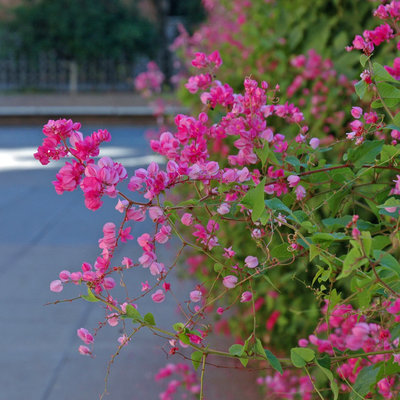
Noelle Johnson Landscape Consulting
Low Deserts (up to 3,000 Feet)Spend some time evaluating your landscape. Is it looking colorless and boring? March is a great time to add color and interest by planting summer-flowering shrubs and vines.
Flowering vines are a great way to dress up an entryway or to add color to a fence. Try growing these pink-blooming vines:
Queen's Wreath (Antigonon leptopus), shown here;
pink bower vine (Pandorea jasminoides) or
pink trumpet vine (Podranea ricasoliana).Red bird-of-paradise (Caesalpinia pulcherrima), Baja fairy duster (Calliandra californica),
Texas sage (Leucophyllum frutescens), chaparral sage (Salvia clevelandii) and
Arizona yellow bells (Tecoma stans stans) are large summer-flowering shrubs that add great color to the landscape.
Large shrubs, 5 feet and higher, should be planted toward the back of the landscape. Shrubs are a great way to hide a boring wall or fence. They are also effective at hiding air-conditioning units and pool equipment from view. Plant lower-growing shrubs and perennials in front of taller shrubs.
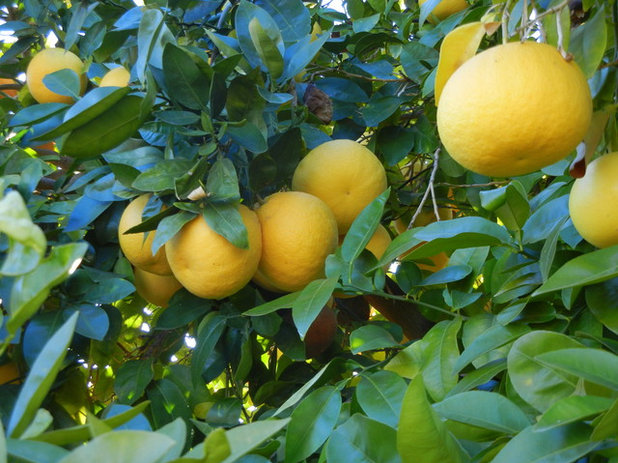
Noelle Johnson Landscape Consulting
Do you love citrus? March is the best time of year to add a new citrus tree to the garden. Any pruning that your citrus needs should also be done this month. Citrus trees do not require much pruning. Concentrate on removing dead or crossing branches.
While removing lower branches of citrus so that they have a more traditional tree shape is popular, try to avoid the temptation. Lower branches of citrus trees bear the sweetest fruit, and the most of it. The lower branches also help to protect the trunk of the tree from sunburn.
Shown: Grapefruit
How to Keep Your Citrus Trees Well Fed and Healthy
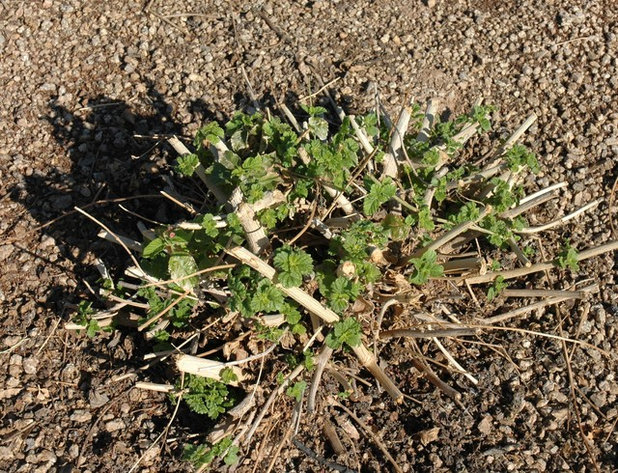
Noelle Johnson Landscape Consulting
Prune frost-damaged growth. Make sure to wait to prune until the danger of frost has passed. Not sure when your last frost date is? Check out your city's average frost dates.
Frost-tender plants, like lantana (
Lantana spp)
, look their best when pruned severely back to 6 inches. This type of pruning rejuvenates the plant by stimulating new growth, which will produce more leaves and flowers than the older branches.
Shown: Pruned
'Radiation' Lantana (
Lantana camara 'Radiation')
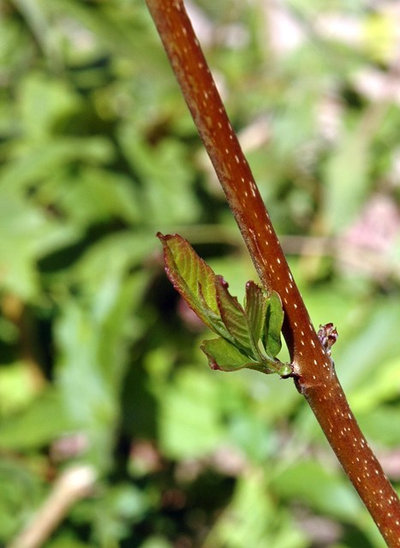
Noelle Johnson Landscape Consulting
When you're pruning frost-damaged trees and shrubs, it can be hard to tell which parts are dead and which parts are still alive. Often when plants are frost damaged, they lose most of their leaves. But even though a branch may be leafless, it doesn't mean that the entire branch is dead.
The clue to knowing which parts are alive is to look closely at the branches, which will tell you where to make your pruning cut. The part of the branch that is still alive will start to leaf out, while the parts that are dead won't. Make your pruning cut 1/4 inch above the point where the new growth occurs.
Wait until new growth appears before pruning.
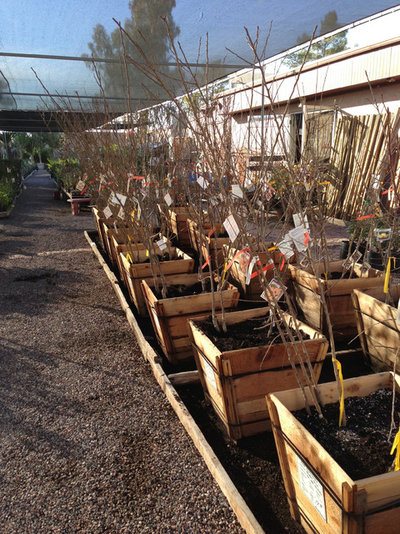
Noelle Johnson Landscape Consulting
Mid- to High Deserts (3,000 to 6,000 Feet)
Do you like the idea of having fresh fruit growing in your backyard? How about growing apples, apricots, peaches or plums? This is a great time to buy bare-root or container fruit trees and plant them in your garden.
For most fruit trees (apples, apricots and plums), you will get the best fruit production if you buy at least two different varieties of each type of tree. This is because many fruit trees cannot pollinate themselves; they rely on pollen from the same type of tree but a different variety.
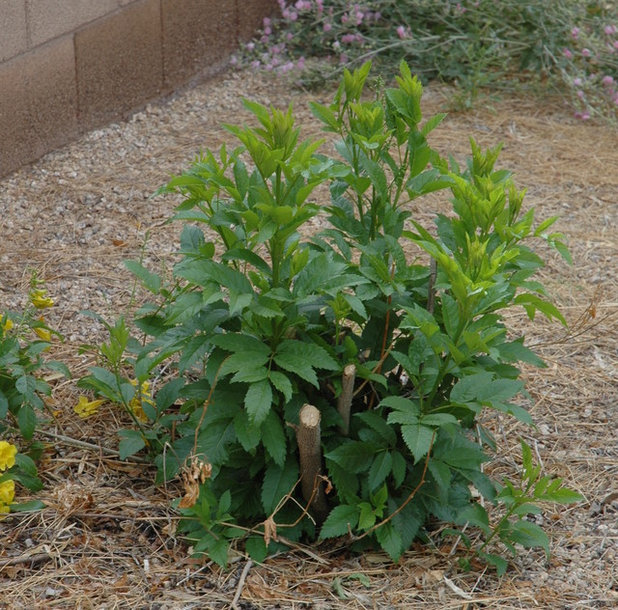
Noelle Johnson Landscape Consulting
Woody, overgrown shrubs will benefit from pruning in spring. Concentrate on removing nonproductive older branches by pruning them off near the base of the shrub — loppers or a pruning saw work well for this type of pruning. As the temperatures warm, new growth will appear.
Shown: New growth emerging from a severely pruned woody shrub.
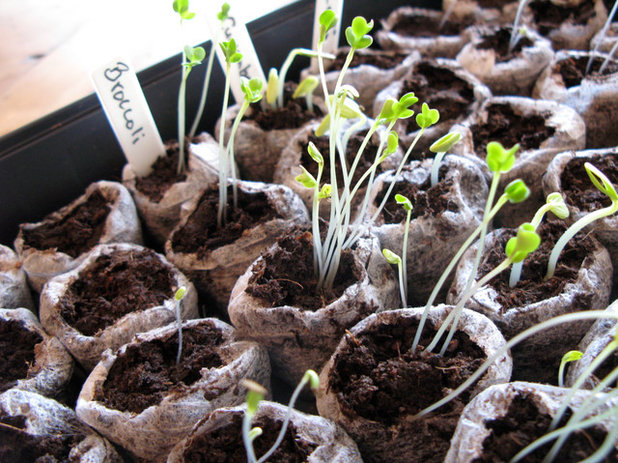
Noelle Johnson Landscape Consulting
Upper Elevations (Over 6,000 Feet)Before you know it, it will be time to go outside and start planting your vegetable garden. To get a jump-start, grow vegetables and flower seeds indoors approximately eight weeks before the last frost date in your area. By that time, you will have eight-week-old seedlings ready to plant in the garden.
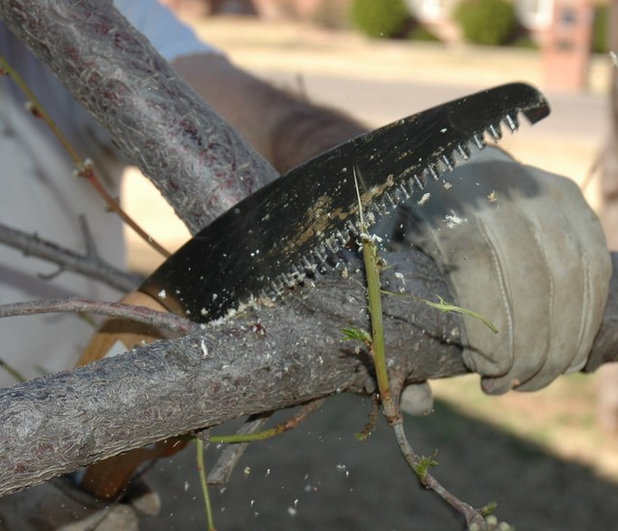
Noelle Johnson Landscape Consulting
Prune deciduous trees. Pruning should be done before the leaf buds begin to swell. The exception is maple and birch trees and shrubs that flower in spring. Don't prune them now; wait until they have finished flowering.
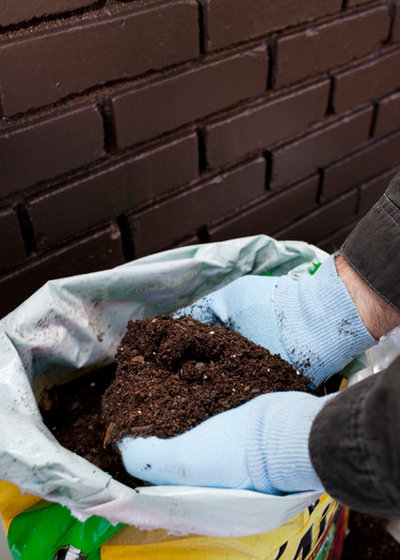
decordemon
Get your soil ready for planting in later spring by working 2 to 3 inches of compost into the top 6 inches of soil. The benefits of compost in the garden are many. Two major ones are that compost adds nutrients to the soil and improves the texture of both clay and sandy soils.
Don't worry if you don't make your own compost. You can buy some at your local nursery.
Get ready for April. Warm spring temperatures are a great time to add succulents to your garden.
Tell us: How are you preparing your Southwest garden for spring?





